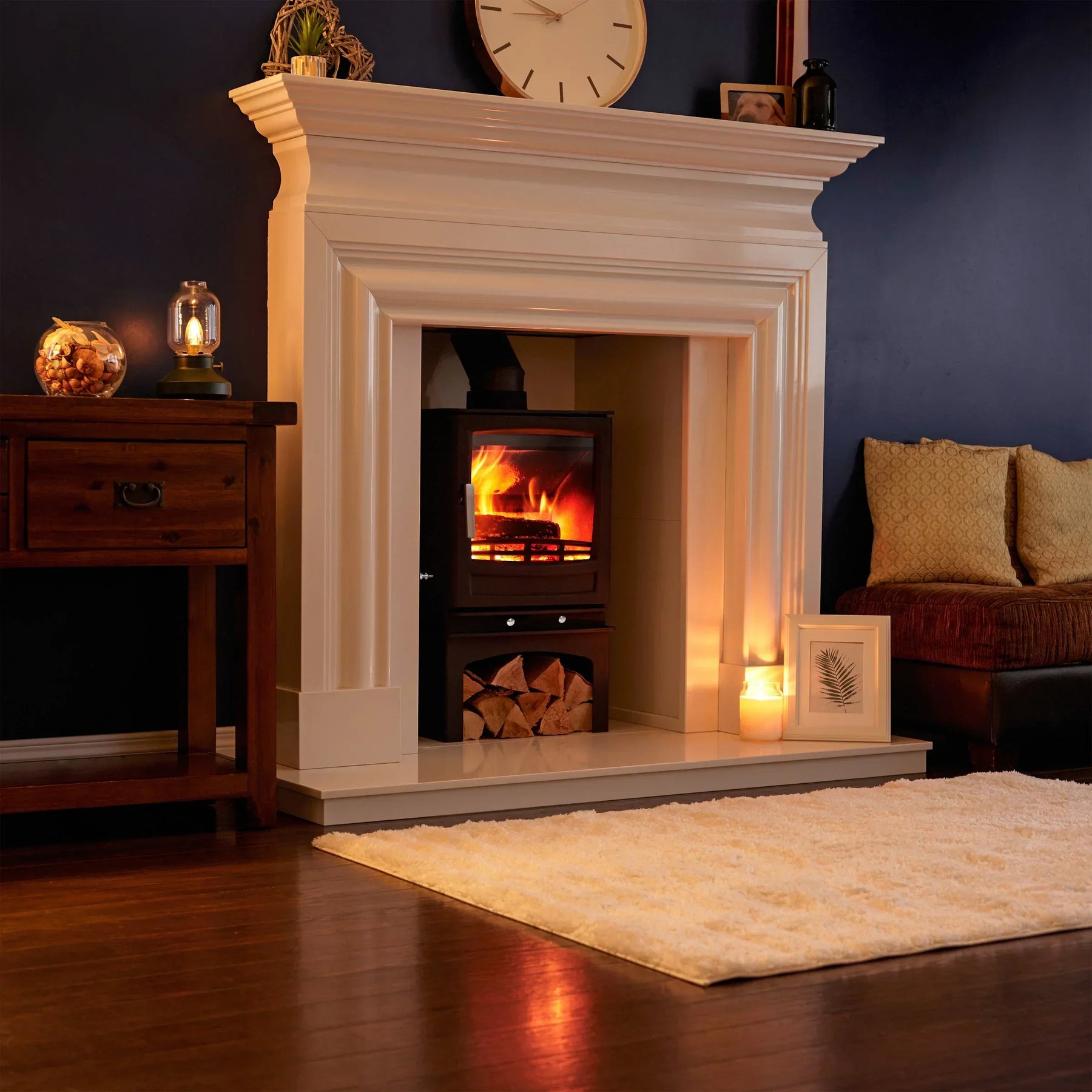0121 271 0221

Top Wood-Burning Stove Hacks for Woodburner Owners
Explore our recommended wood-burning stove hacks to make life with your woodburner easier.

Owning a wood-burning stove is fantastic: you can lower your heating bills, become more environmentally friendly and create a cosier home. But there is no doubt that woodburners can be labour-intensive at times.
That's where our wood-burning stove hacks come in handy. Enjoy all the financial savings and feelings of satisfaction that come with operating a woodburner... just make it a little bit easier for yourself! So, what can you do to free up the time you currently spend managing your stove?
Best wood-burning stove hacks
Let's dive into some simple tips and steps you can take to make owning and operating your wood-burning stove simpler, less laborious.
1. Use ashes to clean the stove glass
A couple of the most labour-intensive wood-burning stove activities: emptying the ashes and cleaning the glass. Why not combine the two to incredible effect by using the ashes to clean the stove glass?
Dip a piece of newspaper into cold ashes, then apply to your glass in a circular motion for an easy glass-cleaning shortcut. The very light abrasion of the ashes is perfect for removing tough stains and cloudiness that water can't shift.
Get your stove glass sparkling clean again and find a use for the ashes.
2. Adopt a three-stage seasoning process
Ensure a more efficient burn and get your stove roaring more quickly by using a three-stage seasoning process.
Seasoning your own wood saves a lot of money on buying seasoned wood from fuel suppliers. Once you’ve got the wood, the three stages are: freshly felled, air dry and house dry.
Freshly felled wood can contain up to 50% moisture. It needs to be cut, chopped and left to dry for an extended period. Once the moisture content is down to 20%, you can bring logs into your home a few days before you expect to burn them. This gives a final chance for evaporation to make your logs burn as efficiently as possible.
3. Use a moisture meter
Check the moisture content of any wood you’re considering burning to find out if it’s suitable for your woodburner. A meter is relatively inexpensive to buy but has the potential to save you a fortune in fuel costs and stove parts. That's a great wood-burning stove hack.
4. Light the stove properly
This might seem obvious, but if you’re spending time relighting your stove or watching it like a hawk in the minutes after lighting because it looks like it’s about to go out, you’re probably not lighting it well enough in the first place.
Lighting a stove properly the first time saves a lot of time and annoyance. Follow these instructions on how to light a stove to get your fire roaring in no time.
5. Use a stove thermometer
Are you operating your stove at too high a temperature? Are you operating it too low a temperature? Both cause your stove to operate inefficiently and can cause permanent damage.
Avoid both of these problems and don't waste any energy wondering if you're burning at the right temperature by using a stove thermometer. A thermometer will tell you whether your wood-burning stove is at optimum temperature.
6. Leave the door when the stove is out of use
Leaving the door slightly open when the woodburner is out of use for extended periods will encourage air flow through the stove system, reducing the risk of corrosion and unnecessary expense on replacing parts.
7. Burn hardwood
As a rule of thumb, hardwoods will take longer to burn than softwoods because they are denser. This means less time spent refuelling for you. Find out more.
8. Keep a tub of fire cement in the house
Perfect for running repairs, a tub of fire cement is always helpful to have around. Any cracks or gaps that appear can easily be fixed.
9. Use a flue cleaner
You need to get your flue cleaned regularly by a chimney sweep. To maximise the time between sweeps and keep your home safe in the meantime, use a flue cleaner.
This handy product can be scooped onto your fire once a week. It removes tar, soot and creosote deposits. This keeps your stove running efficiently and helps to prevent chimney fires.
What are your best wood-burning stove hacks?
We hope you'll be able to put some of our wood-burning stove hacks to use to make your life easier. Taking simple steps to make your woodburner more efficient and in tip-top condition will pay dividends on a daily basis and in the long term.
Do you have some wood-burning stove hacks of your own? Feel free to leave them on our Facebook page.

